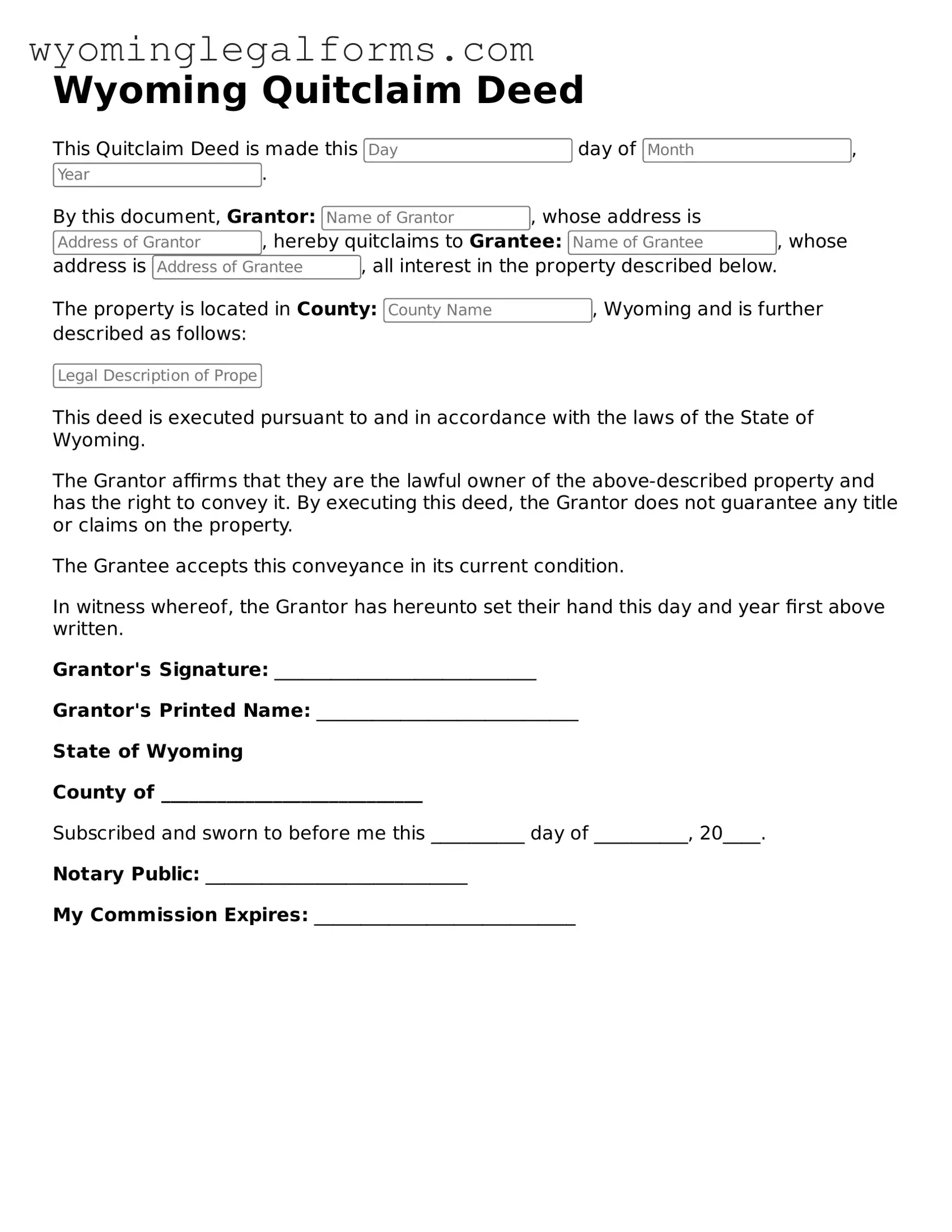What is a Wyoming Quitclaim Deed?
A Wyoming Quitclaim Deed is a legal document used to transfer ownership of real estate from one party to another without guaranteeing the title's validity. It allows the grantor to convey whatever interest they have in the property, if any, to the grantee. This type of deed is often used in situations where the parties know each other, such as family transfers or divorces.
How do I complete a Wyoming Quitclaim Deed?
To complete a Quitclaim Deed in Wyoming, start by filling out the form with the names of the grantor and grantee, the legal description of the property, and any necessary consideration (payment). Ensure that all information is accurate. Both parties must sign the deed in front of a notary public. After notarization, the deed should be filed with the county clerk's office where the property is located.
Is a Quitclaim Deed the same as a Warranty Deed?
No, a Quitclaim Deed differs significantly from a Warranty Deed. A Warranty Deed provides a guarantee that the grantor holds clear title to the property and has the right to sell it. In contrast, a Quitclaim Deed offers no such guarantees. It simply transfers whatever interest the grantor may have, which could be none at all.
When should I use a Quitclaim Deed?
Consider using a Quitclaim Deed in situations where you trust the other party and do not need title guarantees. Common scenarios include transferring property between family members, resolving disputes, or clearing up title issues. It’s also useful in divorce settlements when one spouse relinquishes their interest in a shared property.
Are there any fees associated with filing a Quitclaim Deed in Wyoming?
Yes, there are typically fees associated with filing a Quitclaim Deed. These fees vary by county, so it’s essential to check with your local county clerk’s office for specific amounts. Additionally, you may incur costs for notarization and any necessary title searches.
Do I need an attorney to prepare a Quitclaim Deed?
While it is not legally required to have an attorney prepare a Quitclaim Deed, consulting one can be beneficial. An attorney can ensure that the deed is correctly completed and that all legal requirements are met, reducing the risk of future disputes or complications.
Can a Quitclaim Deed be revoked?
Once a Quitclaim Deed is executed and recorded, it cannot be revoked unilaterally. However, the grantor can create a new deed to transfer the property back or to a different party. This process requires proper documentation and filing to ensure the changes are legally recognized.
What happens if the grantor has no ownership interest in the property?
If the grantor has no ownership interest in the property at the time of the Quitclaim Deed execution, the grantee receives nothing. The deed effectively transfers whatever interest the grantor may have had, but if there is none, the grantee cannot claim any rights to the property.
